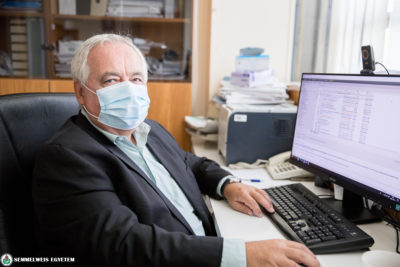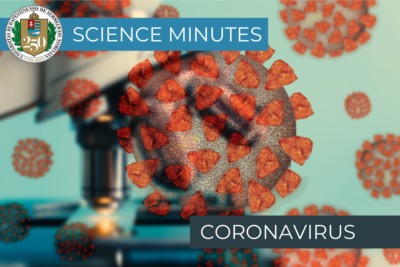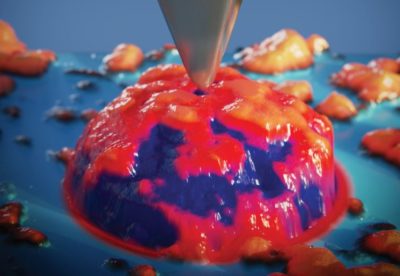Semmelweis University’s Department of Oral Biology are working on the detection of the novel coronavirus (SARS-CoV-2) in saliva in collaboration with several other university departments. Currently, nasopharyngeal and oropharyngeal swabs are taken during PCR testing for diagnostic purposes. Collecting and analysing saliva samples would be a much simpler, quicker and less invasive method of diagnostics that has been tested by Semmelweis University with the involvement of COVID-19 patients since June.
Swabs taken from the upper respiratory tract to detect various viruses, such as SARS-CoV-2 is the most commonly used method. Samples from the nose and the throat are taken for the PCR test used to diagnose COVID-19, which can only be performed by qualified health care professionals using appropriate protective equipment and may also cause inconvenience for the patient. Collecting saliva samples is much easier and quicker, which does not require either physical contact or the invasive intervention performed by trained staff.
 Thus, this method may be much more suitable for performing extensive screening. That is why the role of saliva in the diagnosis of the novel coronavirus is investigated. Human studies started in June and currently the reliability of SARS-CoV-2 detection in the upper respiratory and saliva samples is being compared with the involvement of COVID-19 patients.
Thus, this method may be much more suitable for performing extensive screening. That is why the role of saliva in the diagnosis of the novel coronavirus is investigated. Human studies started in June and currently the reliability of SARS-CoV-2 detection in the upper respiratory and saliva samples is being compared with the involvement of COVID-19 patients.
“Preliminary results show that virus determination from saliva is equivalent to the results of virus detection from upper respiratory tract samples.”, said Dr. Gábor Varga, head of the Department of Oral Biology.
This study is a true collaboration between basic research and clinical activities, which is made possible by the university environment. The research involves units of the university engaged in the diagnosis and care of COVID-19 patients: the Department of Laboratory Medicine, the Department of Otorhinolaryngology, Head and Neck Surgery and the Department of Pulmonology. Sampling is carried out by Dr. Sándor Farkasdi, postdoctoral researcher of the Department of Oral Biology and Dr. Márk Czumbel, PhD student. Saliva-optimised RNA isolation is performed by Dr. Anna Földes, research fellow.
“If we are able to prove that saliva samples are suitable for detecting the virus, our next step is to develop and implement the diagnostic kit at the university.”, said Dr. Gábor Varga.
Prior to the ongoing studies, the staff of the Department of Oral Biology read 102 publications on the topic published between 1 January and 25 April 2020, and analysed 19 relevant, international clinical studies. Their meta-analysis based on the data in the aforementioned publications and clinical trials was co-authored with the University of Szeged and the University of Pécs and was published in Frontiers in Medicine. The meta-analysis based on the international data showed that testing from saliva samples could be an effective and promising alternative to the current method of nasopharyngeal and oropharyngeal samplings. At the same time, optimized and validated methods have to be introduced for sampling, storing and transporting the samples in addition to the standardization of the method of RNA detection.
Saliva-related research has a long-standing tradition at the Department of Oral Biology and researchers have realised that in addition to the detection of diseases of the salivary gland, other systemic diseases and viral infections can be identified from saliva.
Pálma Dobozi
Photo: Attila Kovács – Semmelweis University
Translation: Ágnes Raubinek


